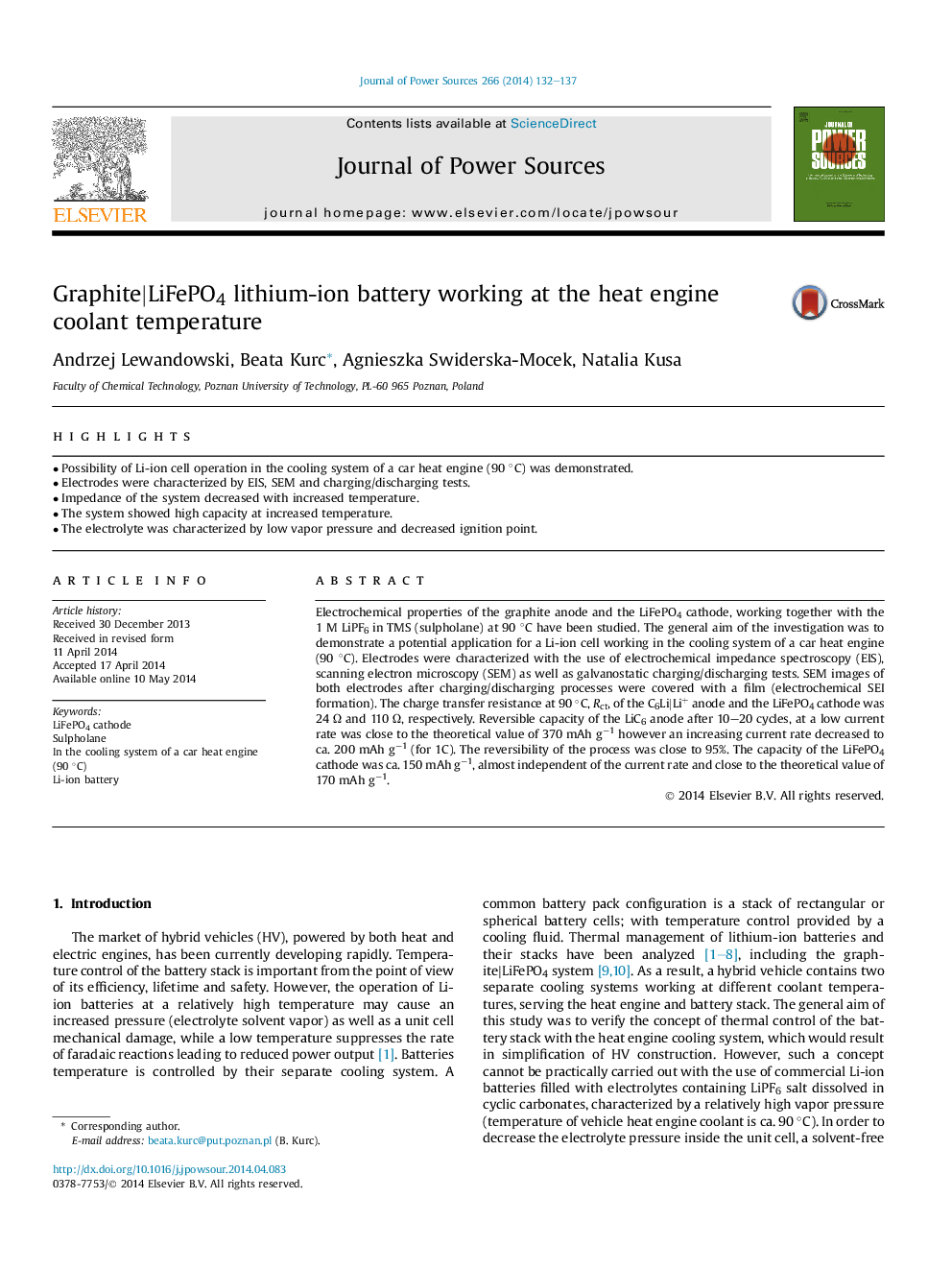| کد مقاله | کد نشریه | سال انتشار | مقاله انگلیسی | نسخه تمام متن |
|---|---|---|---|---|
| 1286763 | 1497966 | 2014 | 6 صفحه PDF | دانلود رایگان |

• Possibility of Li-ion cell operation in the cooling system of a car heat engine (90 °C) was demonstrated.
• Electrodes were characterized by EIS, SEM and charging/discharging tests.
• Impedance of the system decreased with increased temperature.
• The system showed high capacity at increased temperature.
• The electrolyte was characterized by low vapor pressure and decreased ignition point.
Electrochemical properties of the graphite anode and the LiFePO4 cathode, working together with the 1 M LiPF6 in TMS (sulpholane) at 90 °C have been studied. The general aim of the investigation was to demonstrate a potential application for a Li-ion cell working in the cooling system of a car heat engine (90 °C). Electrodes were characterized with the use of electrochemical impedance spectroscopy (EIS), scanning electron microscopy (SEM) as well as galvanostatic charging/discharging tests. SEM images of both electrodes after charging/discharging processes were covered with a film (electrochemical SEI formation). The charge transfer resistance at 90 °C, Rct, of the C6Li|Li+ anode and the LiFePO4 cathode was 24 Ω and 110 Ω, respectively. Reversible capacity of the LiC6 anode after 10–20 cycles, at a low current rate was close to the theoretical value of 370 mAh g−1 however an increasing current rate decreased to ca. 200 mAh g−1 (for 1C). The reversibility of the process was close to 95%. The capacity of the LiFePO4 cathode was ca. 150 mAh g−1, almost independent of the current rate and close to the theoretical value of 170 mAh g−1.
Journal: Journal of Power Sources - Volume 266, 15 November 2014, Pages 132–137